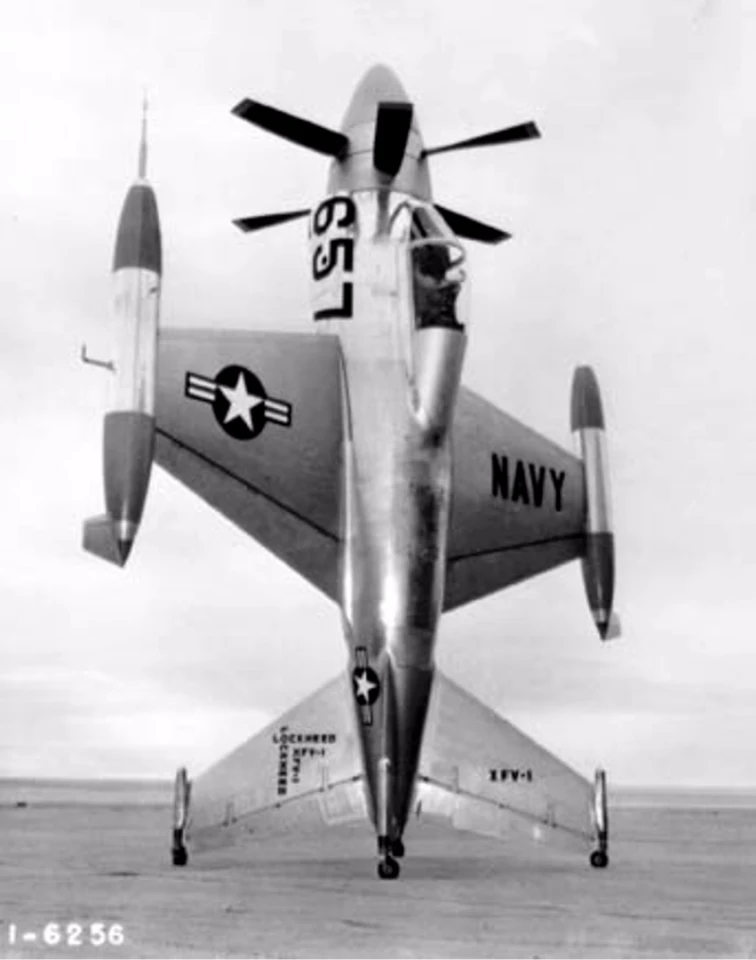The competition to fulfil DARPA's plan to turn US Navy destroyers and frigates into drone-launching aircraft carriers seems to be over as Northrop Grumman has unveiled its version of the Tactically Exploited Reconnaissance Node (Tern) Unmanned Aerial Vehicle (UAV). Based on the flying wing design, the Tern UAV lifts off vertically in a tail-down configuration and is designed to operate from the decks of smaller surface ships in the US Navy without the need for aircraft carrier-type runways.
At present, Northrop is keeping details about the Tern to itself. No image has been released, though a model was unveiled by Northrop to reporters at a press conference in Los Angeles on December 11. However, it is the latest step in the decades-long pursuit of opening up fleet aviation beyond traditional aircraft carriers.
One of the greatest unsung revolutions in naval operations during the Cold War was the installation of flight decks on the sterns of frigates, destroyers, and other ships that allowed them to operate helicopters. By giving these ships air power without relying on carriers or shore bases, their ability to see and fight stretched from the horizon to the limits of the helicopter's range and payload capacity.
In the past 15 years, this has been further augmented by the introduction of UAVs, but these have tended to be small, short-range aircraft of limited capacity compared to their manned counterparts. DARPA's Tern program is looking at how to achieve the same success with UAVs that are larger and longer range than something based on a helicopter and that will allow the persistent forward deployment of fixed-wing drones from small Navy ships anywhere in the world.
Named after the family of long-distance migrating seabirds,Tern is a joint program between DARPA and the US Navy Office of Naval Research (ONR). Its goal is to develop launch and recover systems for UAVs that can be installed inexpensively, but not irreversibly on standard warships as well as medium-altitude, long-endurance, unmanned aircraft comparable in size to a Reaper drone and capable of operating from a small flight deck in heavy seas up to Sea State 5.
Though few details have been released, such launch and recovery systems may involve catapults or a crane-mounted grapple system similar to one that the Royal Navy experimented with to see if Harrier jump jets could operate from frigates. As for the aircraft, they would be designed for long-range intelligence, surveillance, and reconnaissance. The UAVs would be capable of carrying a 272 kg (600 lb) payload and have a range of up to 900 nm (1,670 km).
Until recently, the competition to develop Tern was a two-horse race, but AeroVironment dropped out in September, leaving Northrop Grumman as the only entrant. Though the formal winner for Phase 3 of the program to build a working demonstrator won't be announced until early January, the odds now heavily favor Northrop.

According to Flight Global, the Northrop Grumman version of Tern is a flying wing with a wingspan of about 9.14 m (30 ft). Using contra-rotating blades for flight, it sits on its tail during take off like the experimental Lockheed XFV, which flew in the early 1950s. Under the terms of the DARPA contract, it's capable of not only launching from a confined space, but also transitioning to sustained horizontal cruising.
In a recent report, Chris Hernandez, Northrop's VP for research, technology, and advanced design spoke to Breaking Defense and said that if Northrop is tapped for the next phase of development, the next step will be to carry out powered wind tunnel tests to deal with the design's complex aerodynamics. This will be followed by the development of a full-scale prototype for demonstration sea trials in the Pacific Ocean using a barge or a decommissioned warship using a flight deck of similar dimensions to that of a destroyer.
Source: DARPA






